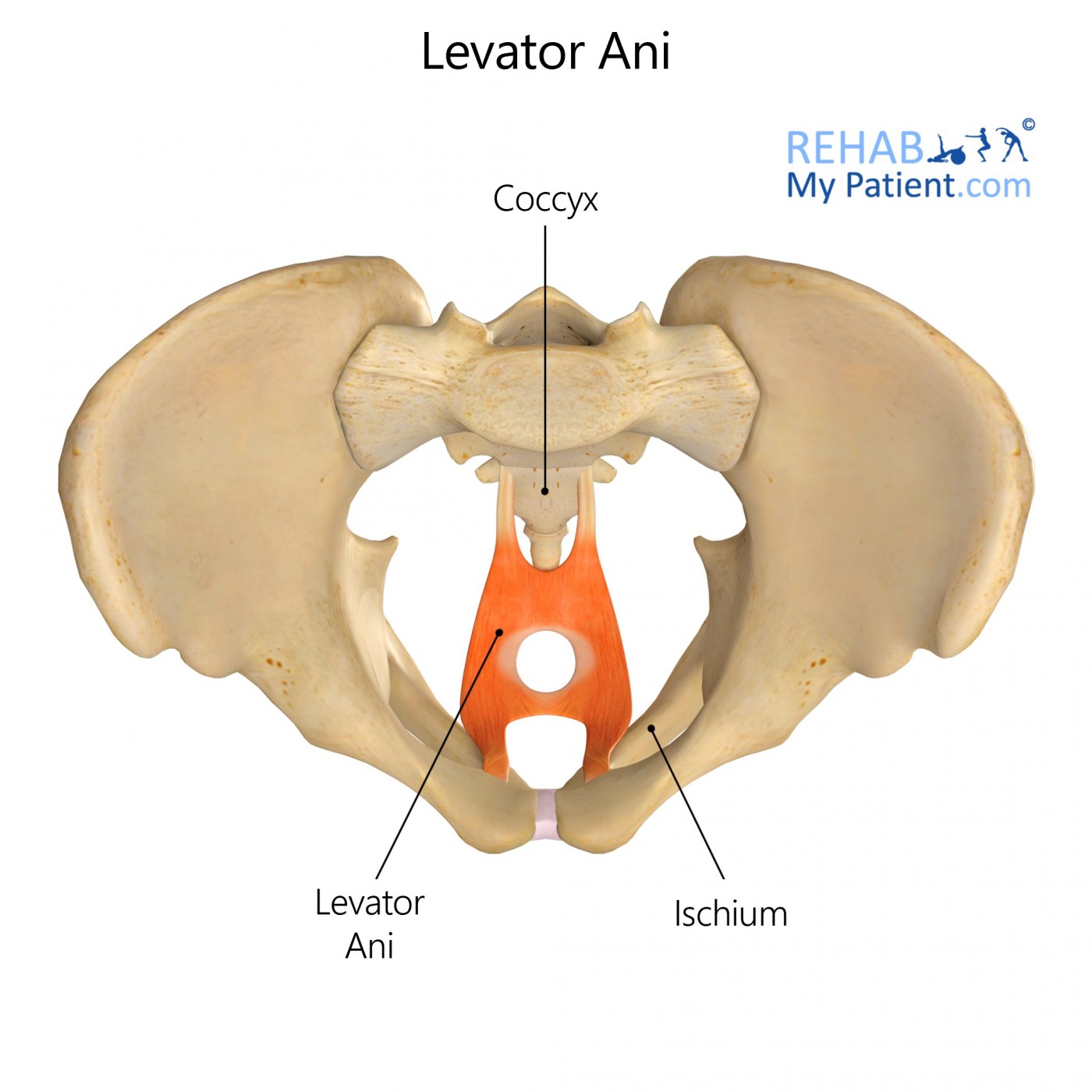Levator Ani
Opublikowano dnia 27th Jul 2020 / Opublikowano w: Miednica

General information
The levator ani is a broad muscular sheet situated in the pelvis and is made up of three different muscles: the puborectalis, pubococcygeus, and iliococcygeus. The levator ani and the coccygeus make up the pelvic diaphragm.
Literal meaning
Lifter of the ring.
Interesting information
The levator ani is a very important structure in the pelvic and abdomen as it stops the organs from falling out of place and stabilises the entire region.
Origin
Puborectalis: Posterior surface of bodies of pubic bones.
Pubococcygeus: Posterior surface of bodies of pubic bones (lateral to puborectalis).
Iliococcygeus: Tendinous arch of internal obturator fascia, Ischial spine.
Insertion
Puborectalis: None (forms 'puborectal sling' posterior to rectum)
Pubococcygeus: Anococcygeal ligament, coccyx, perineal body and musculature of prostate/vagina.
Iliococcygeus: Anococcygeal ligament, coccyx.
Function
Stability and support of the abdominal and pelvic organs, resistance against increased intra-abdominal pressure, opening and closing of the levator hiatus.
Nerve supply
Nerve to levator ani (S4); Pubococcygeus also receives branches via inferior rectal/ perineal branches of Pudendal nerve (S2- S4).
Blood supply
Inferior gluteal, inferior vesical and pudendal arteries.

Relevant research
Evidence shows less shortening of the levator ani muscle during contraction at 37 weeks of gestation is associated with major levator ani muscle defects postpartum.
Siafarikas, F., Staer-Jensen, J., Hilde, G., Bø, K., & Ellström Engh, M. (2015). The levator ani muscle during pregnancy and major levator ani muscle defects diagnosed postpartum: a three- and four-dimensional transperineal ultrasound study. BJOG: an international journal of obstetrics and gynaecology, 122(8), 1083–1091.
Levator ani exercises
None
Zapisać się
Zarejestruj się już teraz, aby skorzystać z bezpłatnego okresu próbnego!
Zacznij korzystać z Rehab My Patient już dziś i zrewolucjonizuj proces przepisywania ćwiczeń, aby zapewnić sobie skuteczną rehabilitację.
Rozpocznij 14-dniowy bezpłatny okres próbny